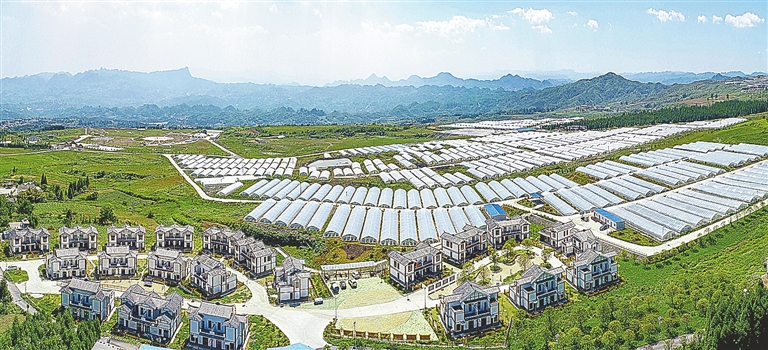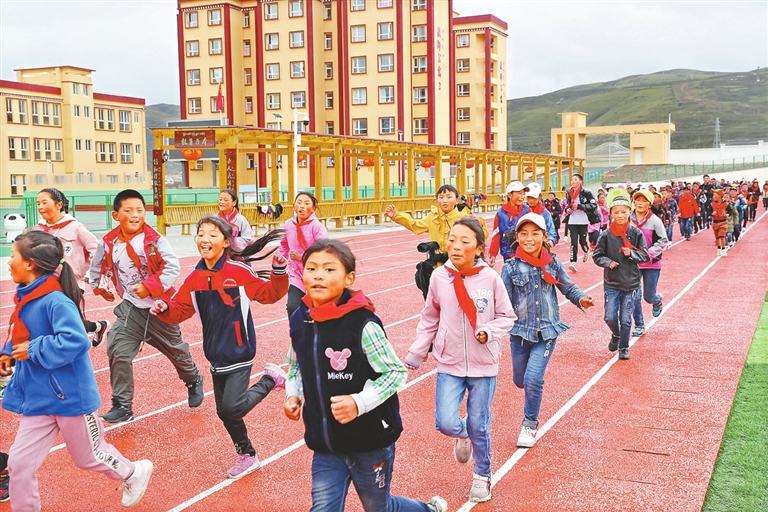

CHINA has scored a “complete victory” in its fight against poverty by lifting over 770 million people out of it in the last four decades, declared Chinese President Xi Jinping at a national commendation conference held in Beijing on Thursday. With such achievements, which Xi referred to as another “miracle” that “will go down in history,” China has achieved the U.N. goal of poverty eradication 10 years ahead of the 2030 deadline. Shenzhen, a special economic zone and a test field of reform and opening up in the world’s most populous country, has taken its fair share of responsibility in the country’s fight against poverty. Since the 18th National Congress of the Communist Party of China in 2012, Shenzhen has invested a total of more than 32 billion yuan (US$4.94 billion) of fiscal funds into the country’s poverty alleviation cause, dispatching over 7,000 Party cadres, medical workers and teachers to poverty-stricken areas, according to Shenzhen Special Zone Daily. The southern metropolis has invested more than 120 billion yuan in poverty eradication over the past three decades, helping more than 3.4 million people shake off poverty and removed 42 impoverished counties from the poverty list. Party cadres in action Shenzhen’s aid to poverty-stricken areas started with Meizhou, a prefecture-level city in eastern Guangdong Province, in 1990. Over the past 30 years, Shenzhen has paired up with the country’s less developed areas in 17 provinces, autonomous regions and municipalities. In 2019, Shenzhen set up a poverty alleviation cooperation and exchanges office to better coordinate the city’s paired assistance work to the less developed areas. Taking a look at the national map, one will find that almost all of the areas paired up with Shenzhen are mountainous areas or snow-covered border towns in harsh environments and with their populations mired in poverty. Huang Bin, a Party cadre from Shenzhen, overcame altitude sickness in Shiqu County, Ganzi Tibetan Autonomous Prefecture of Sichuan Province, where the average altitude is 4,526 meters, and took the lead in promoting safe drinking water projects to block the transmission of hydatidosis that had plagued local people for years. Qiu Qizhou is a Party cadre from Bao’an District and served in a temporary position in Dahua County, Guangxi Zhuang Autonomous Region. During his tenure, Qiu visited all 16 townships and 92 impoverished villages in the county in spite of rugged mountain paths. According to Chen Zhensong, head of a poverty alleviation team in Oucuo Village of Lufeng City, back in 2013, poverty alleviation work in the village was carried out with a difficult start in the face of obstacles such as language barriers, villagers’ noncooperation and mixed interests of all parties involved. Shenzhen has also successfully built 324 Party-masses service centers in poverty-stricken villages in Heyuan and Shanwei cities, in a bid to better provide organizational support for poverty alleviation and the implementation of the rural revitalization strategy. Improving living standards Located in Guangxi, Huanjiang is the only autonomous county for ethnic Maonan citizens in China. Since pairing up with the county, Futian District of Shenzhen has provided all-round assistance to Huanjiang, including renovating dilapidated buildings, ensuring drinking water safety and building supporting facilities for educational purposes. In May 2020, Huangjiang County was removed from the poverty list. The whole Maonan ethnic group in the country has also been lifted out of poverty, with people’s living standards having been significantly improved. Maonan is only an epitome of Shenzhen’s aid to improve the living standards of ethnic groups. On July 29, 1995, the construction of 21 schools, supported by Shenzhen with a 13.3-million-yuan fund, started in Sandu County of Guizhou Province all on the same day. Sandu is the only autonomous county of the Shui ethnic group in China and successfully cast off poverty in 2020. Shenzhen’s aid to Sandu began with a project in 1995. Over the past 20 years, Shenzhen has initiated more than 330 assistance projects in the county, with schools, hospitals and a bridge bearing the witness to the friendship of the two places. Shenzhen has made great efforts to ensure that rural poor people are free from worries over food and clothing and have access to compulsory education, basic medical services and safe housing. The city has also assisted in building major livelihood projects in the less developed areas, targeting the problems of greatest concern to the local people. Focusing on education, medical service and housing, Shenzhen has aided the construction of major projects such as Kashgar University, Shenta Middle School, the Guangdong Polytechnic Normal University Heyuan Campus, Shanwei College of Technology, Shenhe Central Hospital and Shenshan Central Hospital. In Xilin County, Baise City of Guangxi, the Luohu Experimental School currently has 2,275 students, including 1,697 students from registered impoverished families. The school, which was funded and built by Luohu District of Shenzhen, started recruiting students in September 2019. The school is well equipped with supporting facilities so that poor mountainous areas can share the achievements of the reform and opening up in the special economic zone, said Liu Wenyang, the school’s principal. Market-oriented industrial support “I can get a fixed monthly income of 3,200 yuan and nearly 40,000 yuan a year working at the (employment) base,” said Huang Ziping, a villager of Tianxi Village in Lianping County, Heyuan City of Guangdong Province. Having shaken off poverty, Huang’s family is living a life that is more than just making ends meet. To help poverty-stricken areas get rid of poverty, Shenzhen has leveraged its advantages in industrial development and markets and has assisted these areas to develop characteristic industries by building industrial parks. In Bama County of Guangxi, the Shenzhen-Bama Big Health Cooperation Special Pilot Zone has attracted 41 projects, securing a total investment of nearly 33.8 billion yuan and offering more than 2,000 jobs. According to statistics, in the past four years, Shenzhen has built and supported the construction of 86 industrial parks and promoted 253 projects worth over 100 million yuan. In Heyuan, the industrial park jointly built by Shenzhen and Heyuan has formed an industrial cluster of eight industrial parks. In Kashgar of Xinjiang Uygur Autonomous Region, the Kashgar (Shenzhen) Industrial Park has become an industrial cluster for textile and clothing and electronic assembly. The park covers nearly 390,000 square meters and houses about 600 enterprises with more than 10,000 employees. “The land used to be like a pool of stagnant water. Now that it’s opened up, the water can flow farther away,” said Wei Yanmei, a villager from Tangwan Village, Huanjiang County of Guangxi. Wei used to live on the meager income acquired from sericulture. As her village has utilized Shenzhen’s assistance fund to build a poverty alleviation industrial park, Wei rents out all her 6 mu (about 4,000 square meters) of land, which brings her a steady income stream. Shenzhen has also worked on poverty alleviation through encouraging the purchases of goods and services provided by people in poor areas as a way to increase their income and help lift them out of poverty. A total of 32 agricultural products from Guangxi have been introduced to markets in Shenzhen and even to the Guangdong-Hong Kong-Macao Greater Bay Area, expanding the circulation and marketing channels for agricultural products from poor areas. (Zhang Yu, Lai Huijun) | 
